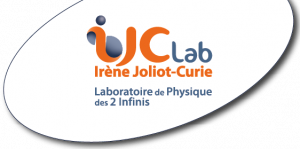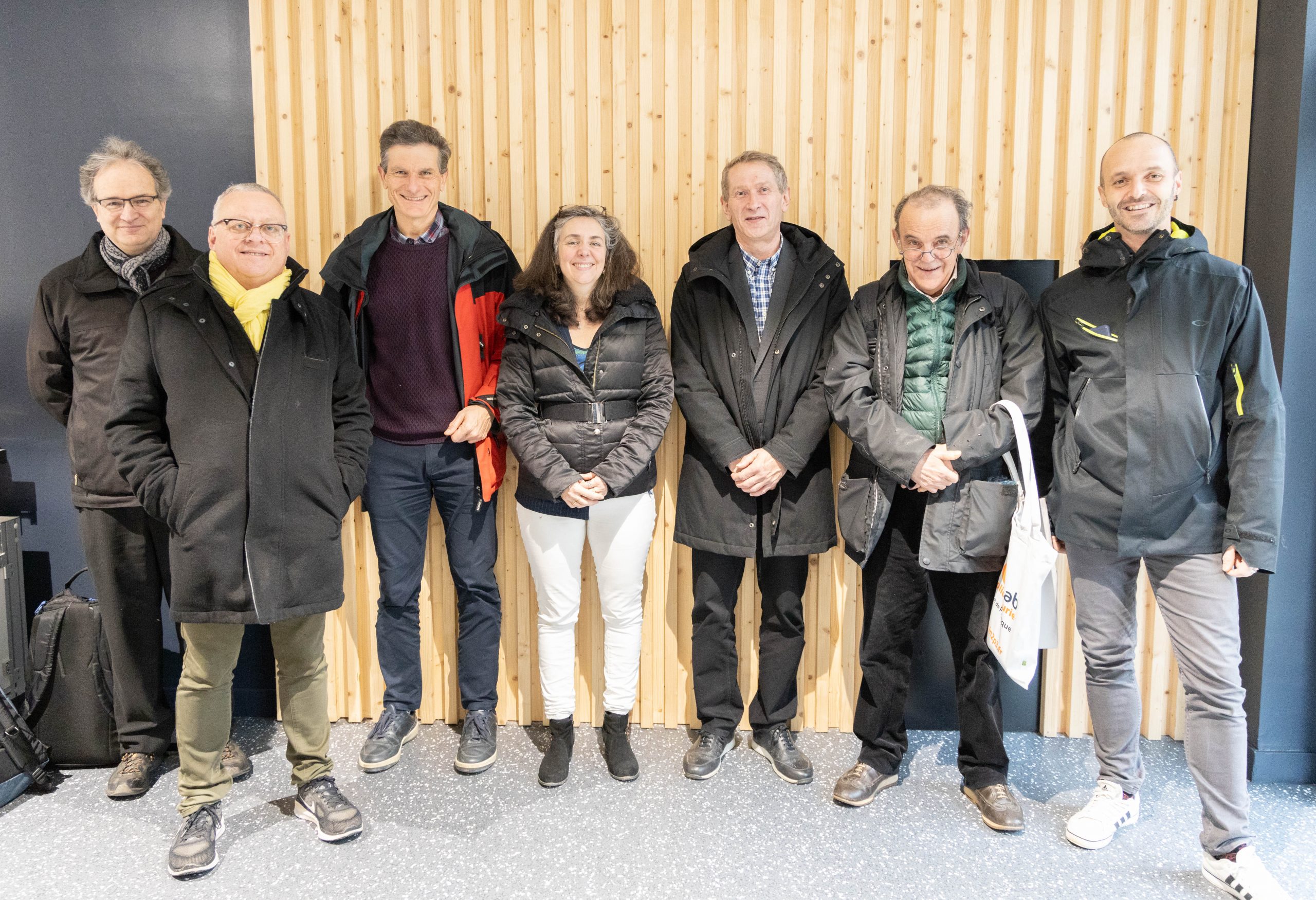
The visit of a delegation from CNES (French National Centre for Space Studies) to IJCLab on January 31, 2025, marked an additional milestone in a partnership established since the late 90s that continues to develop around several research areas in astrophysics, cosmology, and the study of extraterrestrial matter. From left to right on the picture: Vincent Tatischeff (IJCLab), Philippe Laudet (CNES), Vincent Dubourg (CNES), Sophie Henrot-Versillé (IJCLab), Thierry Bret-Dibat (CNES), Francis Rocard (CNES), Martin Boutelier (CNES) © Dominique Longieras/IJCLab
Initiated by Thierry Bret-Dibat, Deputy Director of Universe Sciences and Exploration at CNES, this meeting included three thematic managers from CNES (Francis Rocard, Philippe Laudet, and Martin Boutelier), the Deputy Director of Universe Sciences Projects (Patrick Castillan) and his assistant (Louise Lopez), and the Deputy Director of Balloons (Vincent Dubourg). This follows an initial visit that took place in 2021.
The visit strengthened exchanges, deepened mutual understanding, and consolidated ongoing collaborations:
- Gamma-ray burst polarization - COMCUBE-S
- Gravitational wave follow-up - SVOM
- Cosmology - LiteBIRD
- Digital innovation - Fink
- Analysis of extraterrestrial samples from Rosetta, Ryugu, and Chang'E5
- CALVA and MYRTHO platforms
The involvement of teams from IJCLab's Astroparticle, Astrophysics, and Cosmology (A2C) division, the laboratory management represented by Achille Stocchi, Fadi Ibrahim, and Valérie Chambert, as well as Nicolas Leroy and Sophie Henrot-Versillé for IN2P3 management, demonstrates the shared commitment to strengthening this partnership.
Joint scientific projects
Gamma-ray burst polarization
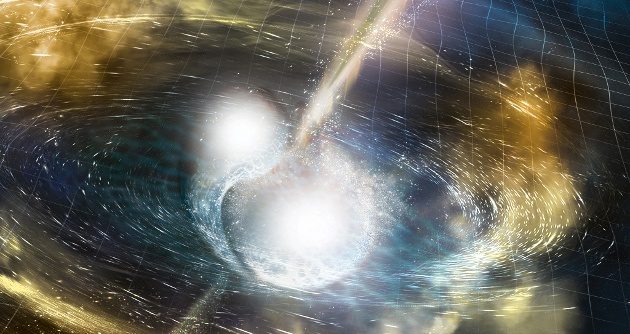
Artist's view of two neutron stars merging. The beams represent the gamma-ray burst while the undulating space-time grid indicates isotropic gravitational waves. Photo credit: National Science Foundation/LIGO/Sonoma State University/A. Simonnet
The COMCUBE-S project aims to study gamma-ray bursts, very brief emissions of enormous quantities of gamma rays coming from very far in the universe, well beyond our galaxy. These events, among the most violent in the universe, are produced during the cataclysmic death of a very massive star or by the merger of two compact stars, two neutron stars, or a neutron star with a black hole. To better understand the physics involved in these explosions, COMCUBE-S will measure the linear polarization of gamma rays, in other words, the preferred orientation of their electric field, using a constellation of 27 microsatellites in Earth orbit at approximately 500 km altitude. The mission will also be able to alert other telescopes on the ground or in space about a new source in the sky in less than thirty seconds after its detection, to perform multi-wavelength observations of the cosmic phenomenon. COMCUBE-S is currently in the study phase (phase A) with the European Space Agency (ESA) and receives significant support from CNES.
In June 2024, CNES operated for the first time a transatlantic stratospheric balloon flight from Swedish Lapland to Baffin Island in northern Canada, carrying a prototype gamma polarimeter developed by the COMCUBE collaboration. During the 3 days and 17 hours of flight above the Arctic, the instrument successfully detected numerous gamma rays generated by atmospheric reactions, as well as radiation emitted by the Crab Nebula and its pulsar, under conditions similar to those of the future space mission. Coordinated by Vincent Tatischeff from the Astrophysics and Cosmochemistry team of IJCLab's A2C division, the COMCUBE collaboration involves all technical departments of the laboratory's engineering division.
Gravitational wave follow-up
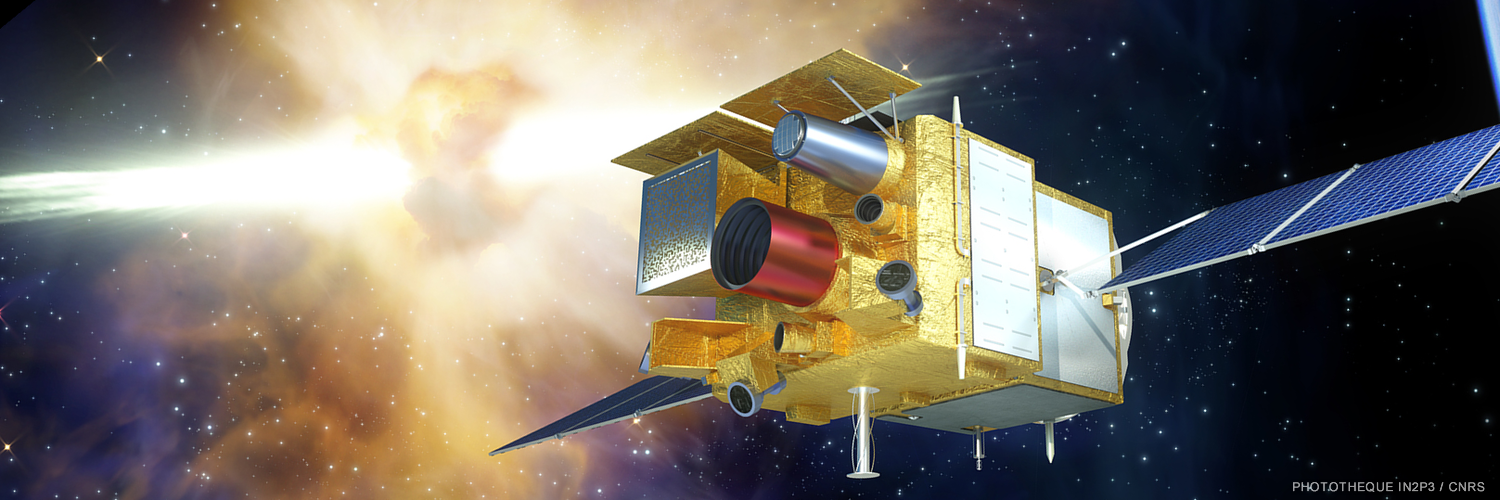 Artist's view of the SVOM satellite. Credit: CNES
Artist's view of the SVOM satellite. Credit: CNES
The joint work on the Franco-Chinese SVOM mission, launched in June 2024, also demonstrates the effectiveness of the collaboration between CNES and IJCLab. Florent Robinet, from the Gravitational Waves team of the A2C division, coordinates this activity and is responsible for the embedded software of the X-ray telescope, MXT (Microchannel X-ray Telescope).
This program can detect and locate radiation sources with precision to less than a few arc minutes (angular measurement unit) in a few seconds, an essential speed to allow other telescopes to quickly observe these transient phenomena. The team's interest focuses particularly on detecting gamma-ray bursts whose sources also produce gravitational waves detected on the ground (notably by the Virgo detector).
During this occasion, our CNES guests visited CALVA, thanks to Angélique Lartaux and Aymeric van de Walle. CALVA is a platform dedicated to improving gravitational wave detectors (vibrations of space-time produced by major cosmic events). It allows the study of a technique called "squeezing", which aims to reduce quantum noise in measurements, particularly for future detectors like the Einstein Telescope.
Cosmology
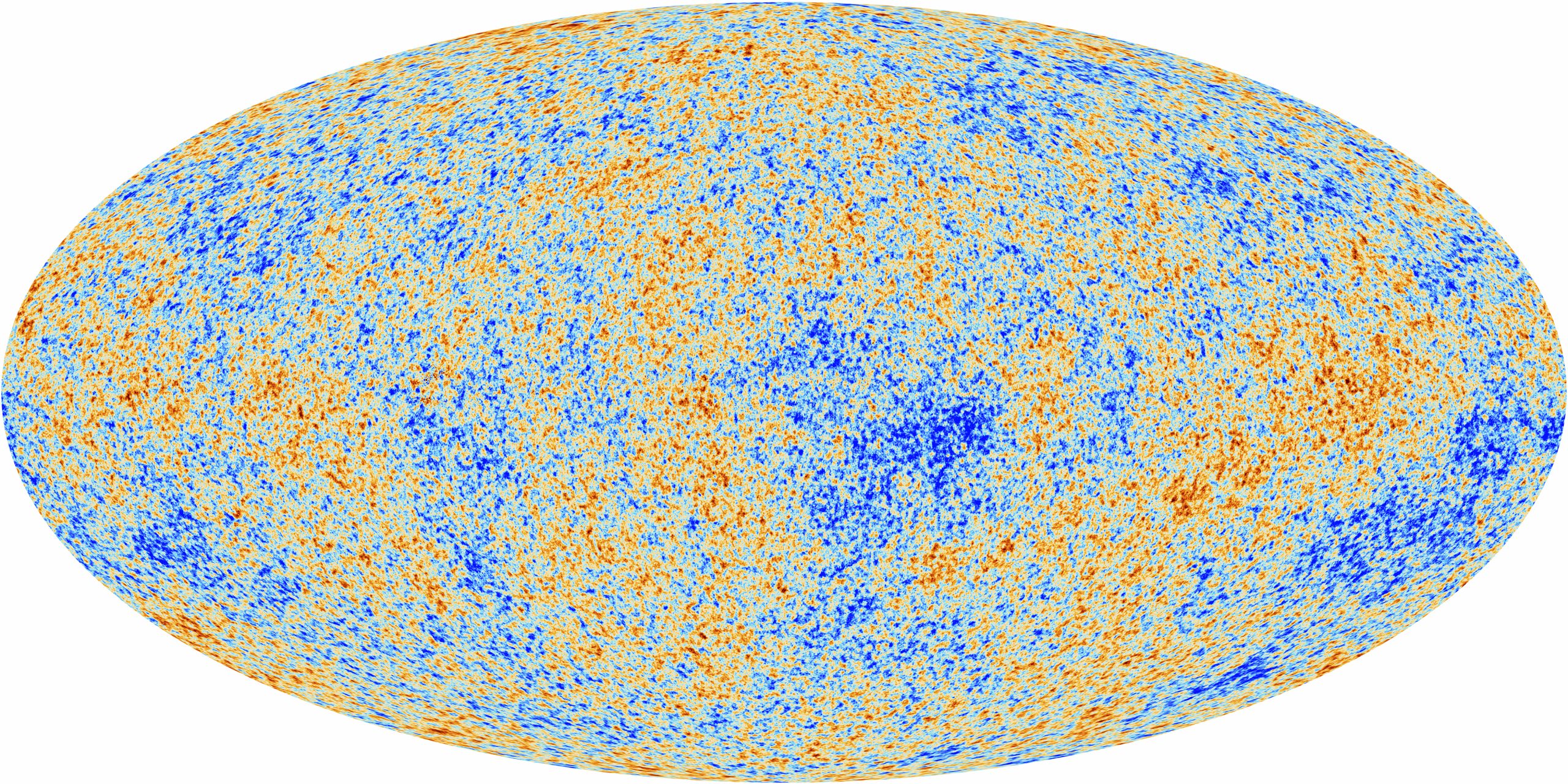
The measurement of the cosmic microwave background (CMB), studied here using the PLANCK satellite. Credit: ESA/IJCLab
CNES and IJCLab are also collaborating on the LiteBIRD mission to measure the polarization of the cosmic microwave background - the oldest observable radiation in the Universe - following their involvement in Planck.
IJCLab's CMB (Cosmic Microwave Background) team, coordinated by Matthieu Tristram, is heavily involved in measuring the primordial signal of B-mode polarization - a unique signature left in cosmological radiation by gravitational waves produced during the first moments of the Universe, during the period of cosmic inflation - a phase of extremely rapid expansion of the Universe.
The team develops data analysis tools (ground segment) and studies the period of cosmic reionization - an era when the first stars and galaxies ionized the neutral hydrogen in the Universe through their radiation. Sophie Henrot-Versillé also contributes to the calibration and modeling of the instrument.
Digital innovation
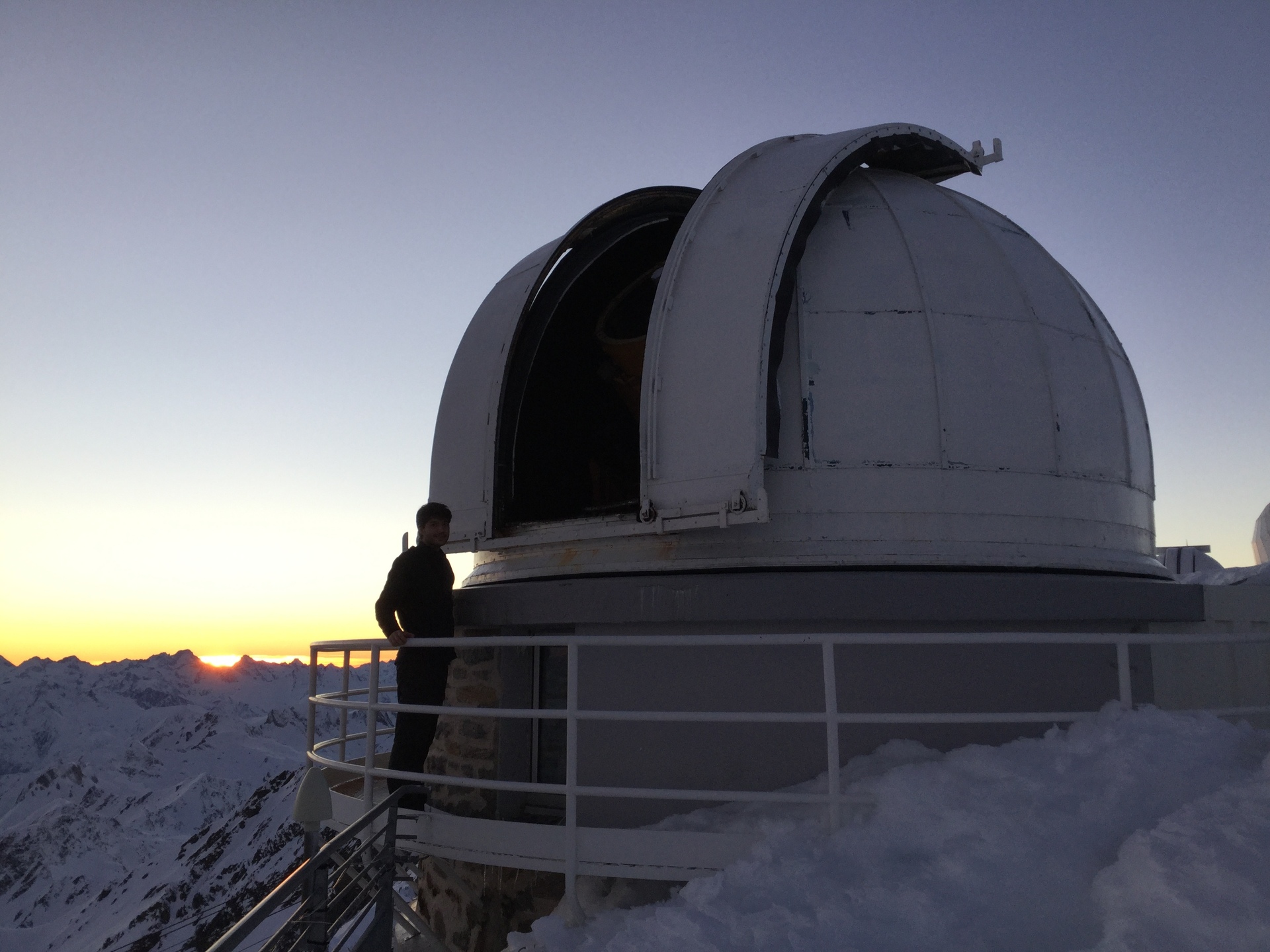
Observatoire Vera Rubin-LSST. Credit : Dominique Longieras/IJCLab.
Vera Rubin-LSST Observatory. Credit: Dominique Longieras/IJCLab
Facing the exponential increase in astronomical data, Julien Peloton (engineering division) and his team at IJCLab have developed the Fink broker, selected as part of the Vera Rubin/LSST project. This computing tool acts as an automatic sorting and analysis system (broker) that processes observations from different telescopes in real time. It allows for rapid detection and classification of transient astronomical phenomena - celestial events that appear and disappear, such as star explosions or cosmic object collisions - to plan follow-up observations.
Fink is also part of the CNES Data Center for small bodies, with the objective of developing standardized access to data from various surveys and missions (ZTF, VRO, Euclid, etc.) and extracting physical and dynamic properties in real time from millions of small bodies detected by these observatories.
Analysis of extraterrestrial samples
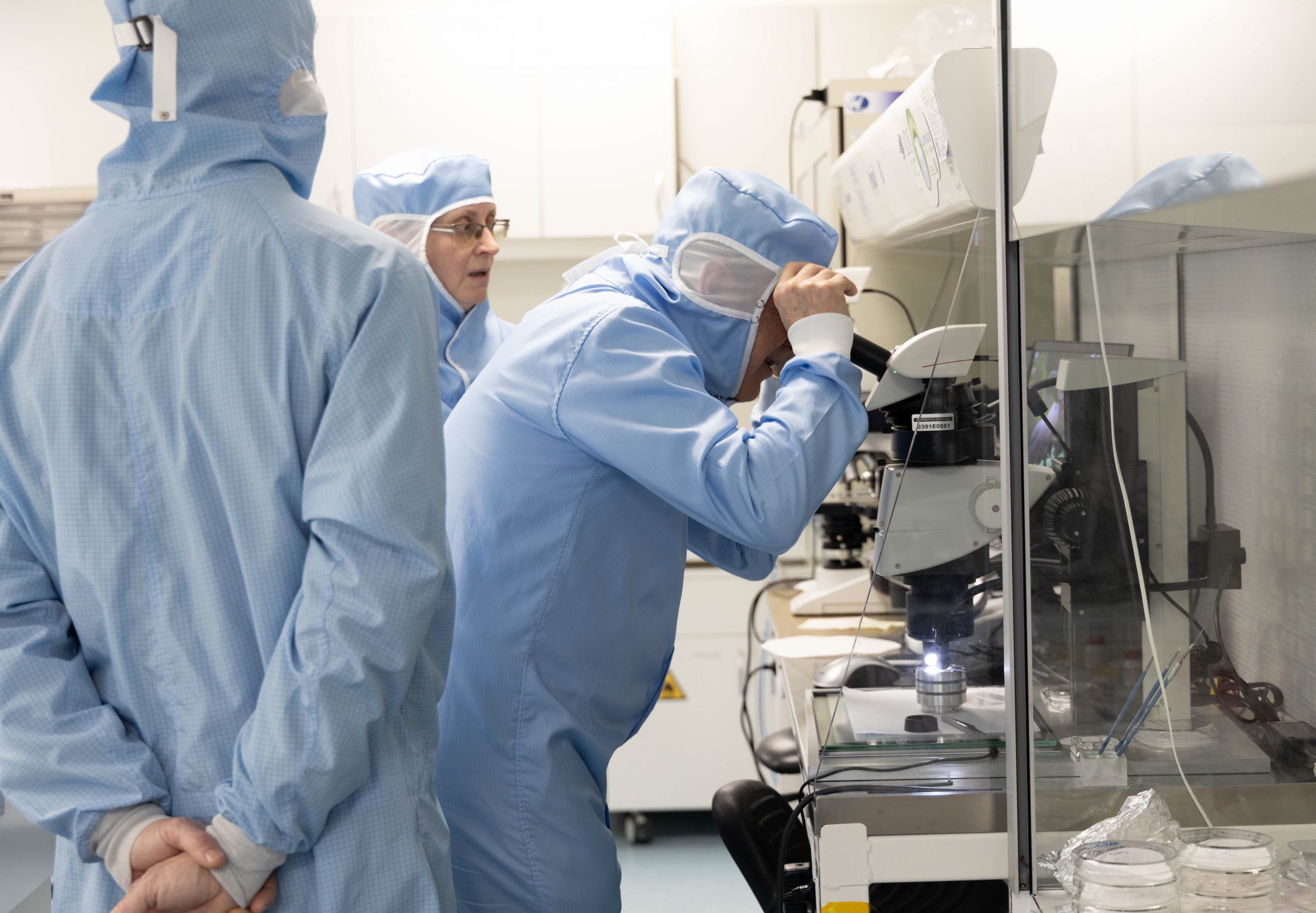
Presentation of extraterrestrial sample observation in MYRTHO by Cécile Engrand (IJCLab), with Francis Rocard (CNES) and Martin Boutelier (CNES). Credit: Dominique Longieras/IJCLab
Finally, IJCLab and CNES collaborate on the study of extraterrestrial matter to better understand the formation of the Solar System: micrometeorite samples, in situ analyses during the Rosetta mission, samples from the Ryugu asteroid brought back by the Hayabusa2 mission, and soon lunar samples from Chang'E5. These activities are coordinated by Cécile Engrand.
IJCLab notably hosts a unique collection of micrometeorites collected in Antarctica by the team and stored in the MYRTHO clean room platform, one of which is equipped for the preservation and preparation of samples (the second room is used for the development of detectors for MeV gamma astronomy, particularly for the COMCUBE-S project).
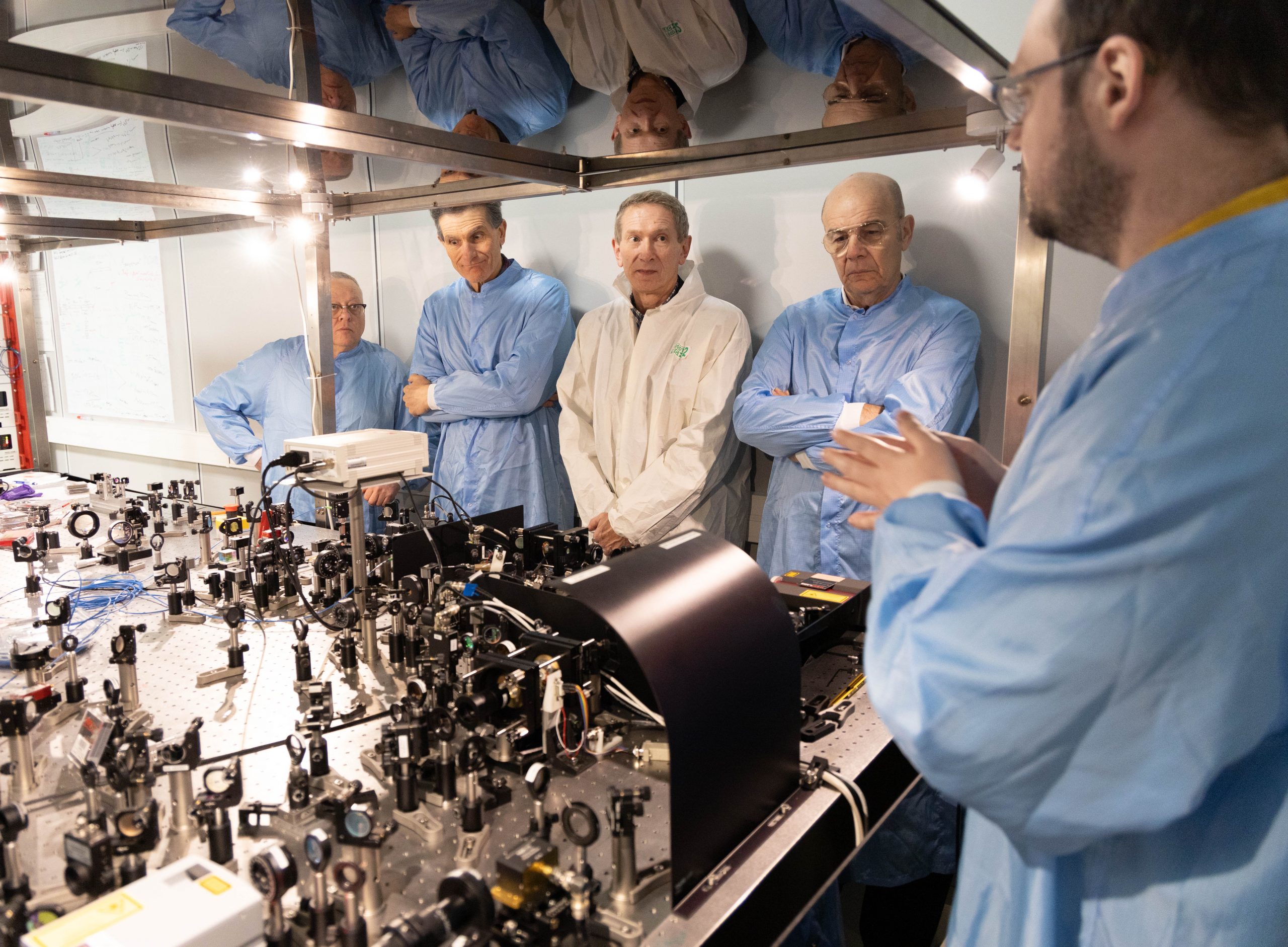
Visit of CALVA. From left to right: Philippe Laudet (CNES), Vincent Dubourg (CNES), Thierry Bret-Dibat (CNES), Patrick Castillan (CNES), Aymeric Van Der Walle (IJCLab) Credit: Dominique Longieras/IJCLab
Technological infrastructures
The visit to the technological platforms also allowed discussion of new possibilities offered by their constant development, such as with ALTO and its brand new Space-ALTO line, particularly for testing material resistance to radiation.
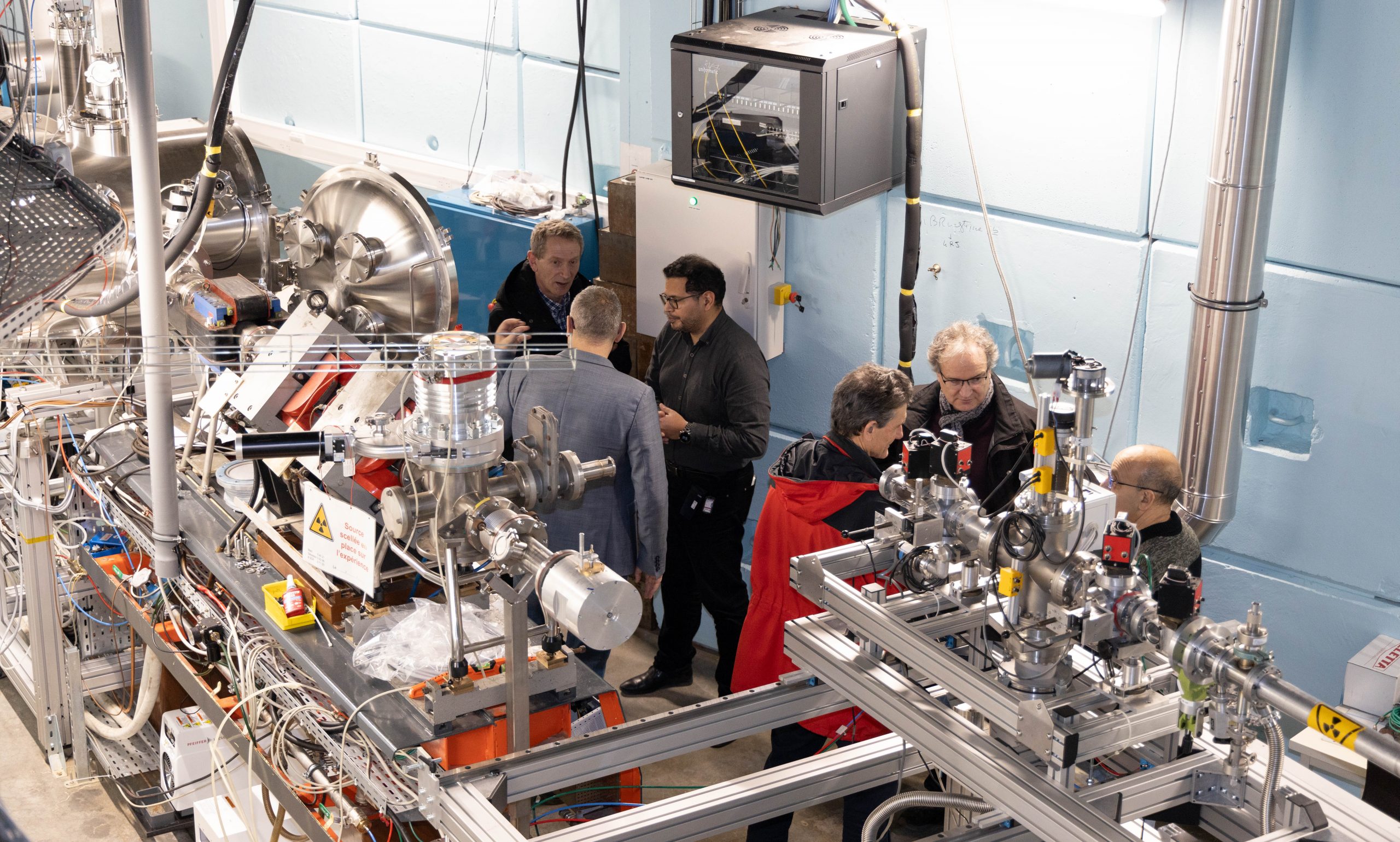 Discovery of ALTO and its Space-ALTO line by CNES, Thierry Bret-Dibat and Vincent Dubourg, with Vincent Tatischeff, Fadi Ibrahim and Enrique Minaya-Ramirez and Abdelhakim Said, scientific and technical coordinators of the platform. Credit: Dominique Longieras/IJCLab
Discovery of ALTO and its Space-ALTO line by CNES, Thierry Bret-Dibat and Vincent Dubourg, with Vincent Tatischeff, Fadi Ibrahim and Enrique Minaya-Ramirez and Abdelhakim Said, scientific and technical coordinators of the platform. Credit: Dominique Longieras/IJCLab
Future perspectives
This meeting allowed for deepening ongoing collaborations and considering new perspectives between CNES and IJCLab, particularly around participation in the proposals for newASTROGAM, a versatile gamma-ray observatory, and FOSSIL, a spectrometer to measure distortions in the blackbody spectrum of the cosmic microwave background, as part of ESA's call for proposals for the future M8 space mission.
